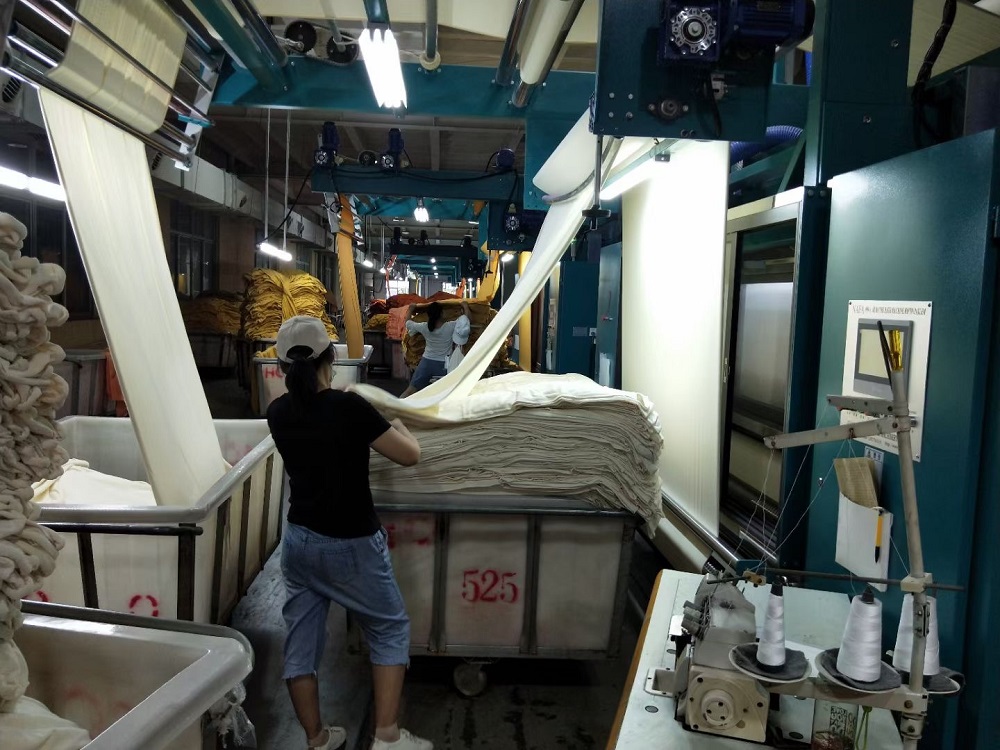As the United States imposes additional tariffs on China, global supply chains are experiencing significant shifts. The surge in U.S. orders re-directed to low-tariff regions, has strained their production capacity, resulting in overall increases in manufacturing prices and delivery delays. Non-U.S clients are facing premium cost pressures during this process, with orders being postponed or forced to absorb higher prices. At this time, China's highly flexible supply chain, kown for its high production capacity and adaptability, has become an important buffer to mitigate this risk, helping brand owners navigate market uncertainties and maintain supply chain stability.
As tariffs on Chinese goods continue to increase, especially in the apparel sector where OEM production faces significant cost pressures, leading to an overall increase in product prices. Under such cost pressures, how to maintain a price advantage in the global market has become a critical challenge for apparel brands.
Shock Chain Adjustment: Capacity Shift and Structural Growth in Southeast Asia
The increase in tariffs has led to a shift in production capacity, with Southeast Asian countries like Vietnam, Cambodia, and Bangladesh becoming major alternative production bases, attracting a large number of orders from U.S. brands. These countries leverage duty-free policies, lower labor costs to drive growth in their manufacturing sectors.
However, the limitations of Southeast Asia's production capacity are becoming increasingly evident. Although production costs are lower, the regions' the supply chain, technological level, production efficiency, and infrastructure construction still lag behind China, which continues to hold a significant capacity advantage in the short term. As a result, brand owners would face challenges in quality control and delivery timelines, particularly as price fluctuations impact stability.
To manage these challenges, brand owners can control costs through small batch customization and flexible production. Collaborating with specialized manufacturers, such as those in the team sports apparel sector (e.g., Champolian, basketball apparel manufacturer), can provide technical support and ensure quality assurance, allowing brands to respond swiftly to market shifts while maintaining stable delivery timelines.

As we move into 2025 to 2026, the capacity pressure in low-tariff regions begins to become more apparent. To increase profits, apparel OEM factories in these regions are likely to prioritize large orders, which could result in longer lead times for small orders and small to mid-sized brands. The high-profit U.S. orders attract significant production capacity, thereby siphoning resources towards the U.S. market and delaying orders from other regions, particularly those from non-U.S. brands.
Case Analysis
Price Difference:
The procurement prices in the U.S. market are generally higher than those in Europe or other regions, prompting duty-free factories to prioritize U.S. orders. As a result, this raises the prices of orders from other markets, creating cost pressures for brands outside the U.S
Extended Delivery Times:
Southeast Asia's production capacity is approaching saturation, and some OEM apparel factories experiencing longer delivery times, especially for small orders and brands with high customization requirements.
To address the impact of capacity siphoning, brand owners must plan proactively, ensuring priority production during periods of capacity constraints. One effective strategy is to deepen collaboration with Chinese wholesale clothing factories, particularly those with strong flexible production capabilities. This allows brands to prioritize production under price and delivery pressure. Additionally, establishing a diversified supply chain system ensures dynamic resource balance, avoiding dependency on the capacity of a single region.

As low-tariff regions become more saturated, small orders and small to mid-sized brands are facing increasing challenges. These brands are at risk of being "squeezed out" of production lines by larger, high-volume orders. For example, if an international brand places an order for 100,000 units in a factory in Vietnam or another duty-free area, a smaller brand's order of just 2,000 units might be delayed by six months, with processing fees rising by over 15% due to limited capacity.
To overcome the "Long-Tail Client Crisis," small brands need to plan ahead, flexibly selecting supply chains, especially for small orders and highly customized products. By establishing long-term cooperation with Chinese manufacturers, who offer flexible capacity, small brands can prioritize production even during peak demand periods and stabilize pricing. Additionally, by improving order forecasting and fostering strong relationships with suppliers, small brands can secure essential production resources and maintain their competitive edge in a challenging global supply chain environment.
Brand owners can effectively assess the response speed and product quality of Chinese manufacturers through small batch production starting from just 72 pieces. For example, Champolian, an OEM apparel factory trusted by professional sports leagues, has demonstrated its advantages in quick response, flexibility, capability and consistent quality assurance. Brand owners can use this model to establish a supply chain "observation post" in China, monitoring capacity stability and production cycles in real time to ensure timely production support even during large order volumes. Validate capacity quickly with Champolian's 72-hour sample service.
Brand owners can adopt a dynamic supply chain allocation strategy based on market demands in different regions. One approach is to calculate the recommended Chinese capacity ratio using the following formula:
Suggested Chinese Capacity Ratio = Your country's dependence on U.S. exports × Industry Benchmark Adjustment Coefficient (e.g., 1.3-1.5)
For example, if an Australian brand's export ratio to the U.S. is 30%, it is recommended that the brand allocate 40%-45% of its capacity in advance to China. This strategy can effectively balance the global supply chain and reduce the risk of over-reliance on duty-free region capacities.

With rising costs and tariff fluctuations becoming a norm, brand owners need to establish and secure long-term, anti-inflation cooperation terms with suppliers. This not only stabilizes production costs but also ensures timely deliveries and consistent production, even amid supply chain disruptions.

Facing the supply chain pressures brought by changes in the international trade environment, brand owners need to adjust their production and supply chain layouts in advance. By flexibly leveraging Chinese flexible capacity, like basketball apparel manufacturers such as Champolian, brands can not only address the challenges posed by tight capacity in duty-free zones but also maintain competitiveness in the global supply chain transformation.
By implementing a diversified and dynamically balanced supply chain strategy, brands can better navigate potential price fluctuations and delivery delays. This approach ensures sustained progress in the face of an ever-evolving global market. To optimize your supply chain resilience, we invite you to contact us and consult with Champonian's expert team today.